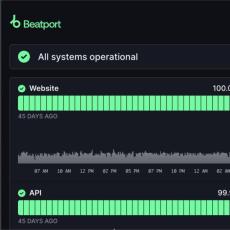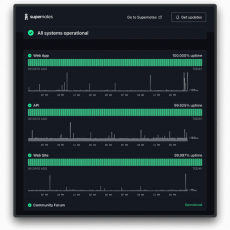|
By Leo Baecker
When systems go down, every minute counts. You need more than just quick fixes. You need a solid system to spot problems early, take action fast, and learn from each incident to keep your users happy. That's what incident management is. In this guide, we'll walk through everything you need to know about incident management, from basic concepts to advanced strategies used by top DevOps teams.
|
By Leo Baecker
Businesses rely on software solutions increasingly in our modern age, and it’s constantly evolving. Compared to some of the software being used in the early 2000s, we’ve seen large changes, resulting in more complex frameworks, which come with their own unique changes. As software and systems become more complex, so increases the probability of errors occurring and the level of jeopardy those errors might present.
|
By Leo Baecker
A status page serves as a vital communication tool, offering real-time updates on the operational status of a service or website. Businesses leverage status pages to enhance transparency, build trust with users, and proactively address potential issues. An effective status page minimizes downtime impact, fosters customer loyalty, and demonstrates a commitment to customer satisfaction, making it an essential component for maintaining a positive online presence.
|
By Leo Baecker
If you work as a CTO, then you already know that having robust monitoring and analytical tools for your technology stack is a prerequisite to getting your job done right. Many companies that started off using Datadog discovered that it can become prohibitively expensive and complex when they needed to scale. As such, there are a lot of people out there currently seeking out alternatives.
|
By Leo Baecker
As someone tasked with handling the pitfalls and consequences of unwanted downtime, it can be difficult to keep up to date with the latest software developments working to address these undesirable yet inevitable situations. And yet, whilst recognizing this fact is a necessary condition of overcoming such challenges, it is not in itself sufficient to meet the task.
|
By Leo Baecker
Are you tired of dealing with server crashes, downtime, and slow response time? Join the club. Server monitoring and maintenance is key to keeping your organization running smoothly, but it's notoriously difficult to manage. That's why it's important to have the right tools in place for server performance monitoring and uptime tracking. Not sure which tool to choose? You're in the right place.
|
By Leo Baecker
You're probably aware that downtime is expensive—but do you know how expensive it is? The short answer is—very. According to the Ponemon Institute, outages cost organizations an average of $9,000 per minute (or $540,000 per hour). That's why companies of all sizes are investing in incident management tools to reduce their downtime and improve the customer experience.
|
By Leo Baecker
If you work as a CTO, then you already know that having robust monitoring and analytical tools for your technology stack is a prerequisite to getting your job done right. Many companies that started off using Datadog discovered that it can become prohibitively expensive and complex when they needed to scale. As such, there are a lot of people out there currently seeking out alternatives.
|
By Leo Baecker
Businesses rely on software solutions increasingly in our modern age, and it’s constantly evolving. Compared to some of the software being used in the early 2000s, we’ve seen large changes, resulting in more complex frameworks, which come with their own unique changes. As software and systems become more complex, so increases the probability of errors occurring and the level of jeopardy those errors might present.
|
By Leo Baecker
As someone tasked with handling the pitfalls and consequences of unwanted downtime, it can be difficult to keep up to date with the latest software developments working to address these undesirable yet inevitable situations. And yet, whilst recognizing this fact is a necessary condition of overcoming such challenges, it is not in itself sufficient to meet the task.
- November 2024 (1)
- February 2024 (4)
- January 2024 (2)
- June 2023 (2)
- May 2023 (1)
- April 2023 (3)
- March 2023 (3)
- February 2023 (2)
- April 2022 (1)
- March 2022 (3)
- February 2022 (3)
- July 2021 (1)
- January 2020 (2)
- July 2019 (1)
- June 2019 (1)
- April 2019 (1)
- March 2019 (1)
Beautifully simple and reliable website monitoring. Receive alerts when your website is down through emails, Slack or SMS, integrated with real time data and insights.
Know when your website is down before your users do with downtime alerts through emails and webhooks, real time data and insights.
Why Hyperping?
- Everything you need, visualized: Monitor your sites with simple and beautiful charts. Measure your uptime, response time and more every minute.
- Get alerted anywhere you are: Seamlessly integrate notification channels for you and your teammates such as Slack, SMS and emails. Get alerts and react before your users even notice.
- Global monitoring: Choose from 10 different locations worldwide. We double check (no false positives) from two more locations whenever an error occurs to confirm downtime.
- Transparency for customer trust: Inform your users about your availability and reliability through the Public Status Page feature. Set up one in seconds.
- Keep control of your branding: Customise your status page by changing your favicon, a custom logo and the color of the graphs.
- SSL Monitoring: Never worry about when your SSL certificate is expired or damaged.
- User Satisfaction: Understand what your users feel when browsing your site.
- Data retention: Go back in time by keeping a large history of your uptime, response time and outages.
Top companies have peace of mind using Hyperping.








